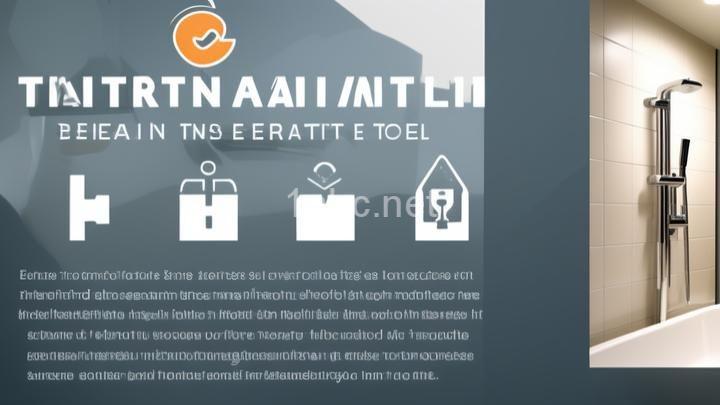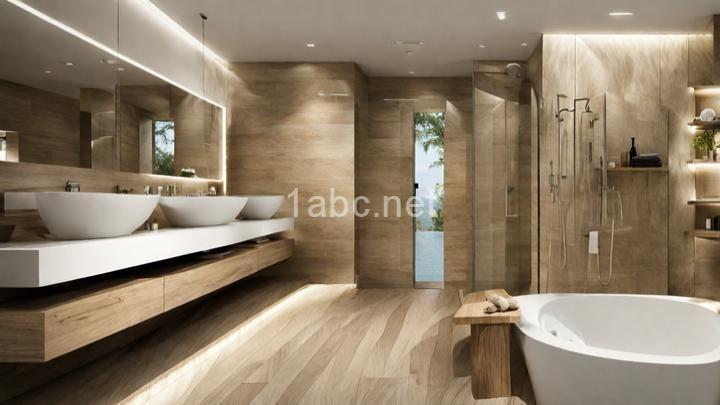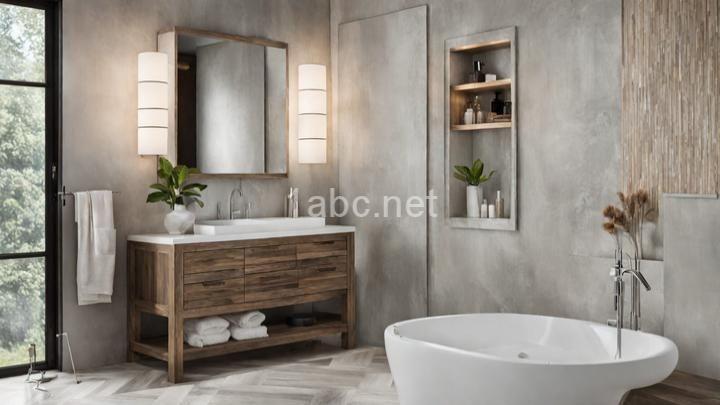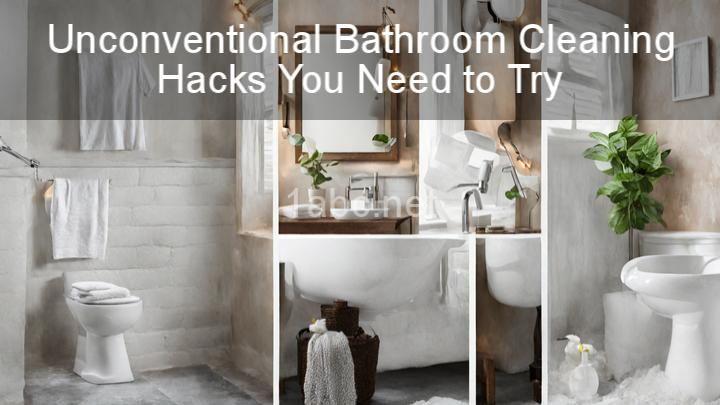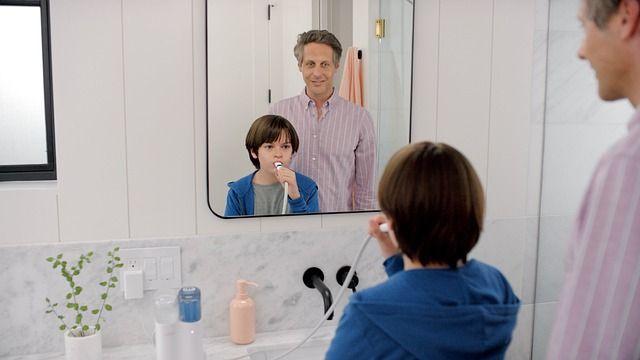Eco-Friendly Bathroom Makeover: Simple Steps to a Sustainable Space
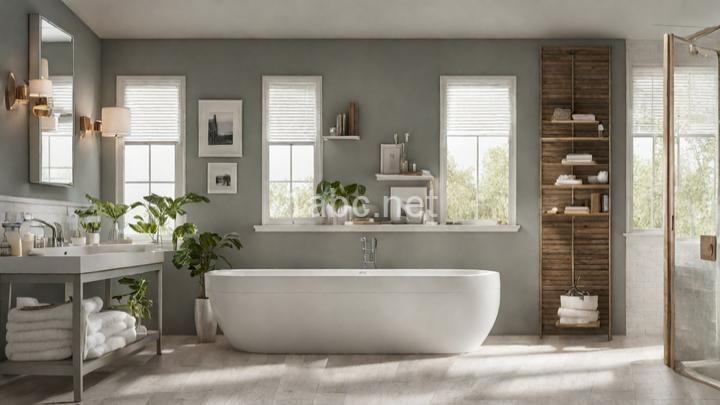
Introduction:
Are you looking to transform your bathroom into an eco-friendly haven? Do you want to make sustainable choices that benefit both you and the environment? If so, you've come to the right place! In this blog post, we will guide you through the process of creating an eco-friendly bathroom, step by step. But first, let's take a moment to understand why it's important to create a sustainable and environmentally-friendly space.
The Importance of an Eco-Friendly Bathroom:
Creating an eco-friendly bathroom is not just about reducing your carbon footprint; it's about making choices that promote a healthier lifestyle for you and your loved ones. By incorporating sustainable practices into your bathroom routine, you can conserve resources, reduce waste, and minimize the use of harmful chemicals. Additionally, an eco-friendly bathroom can contribute to lower energy and water bills, making it a win-win situation for both your wallet and the planet. So let's get started on transforming your bathroom into an oasis of sustainability!
Section 1: Assessing Your Current Bathroom
Before diving into the world of eco-friendly bathroom makeovers, it's important to assess your current bathroom's eco-friendliness. Take a look at areas such as water usage, energy efficiency, and waste management. By evaluating these aspects, you can identify areas for improvement and make informed choices moving forward.
To measure water consumption, consider installing a water meter or using an online water calculator to determine your baseline usage. This will help you understand how much water you're currently using and set goals for reduction. Additionally, pay attention to any leaks or dripping faucets, as these can waste a significant amount of water over time.
In terms of energy efficiency, start by identifying energy-wasting appliances in your bathroom. Consider replacing outdated fixtures with energy-efficient alternatives, such as LED light bulbs or motion sensor switches. Installing natural lighting options, such as skylights or larger windows, can also help reduce the need for artificial lighting during the day.
Lastly, conduct a waste audit to determine areas of improvement. Take note of any single-use items in your bathroom, such as paper towels or plastic toiletry bottles, and consider switching to reusable alternatives. This will not only reduce waste but also save you money in the long run.
Section 2: Water Conservation
Water is a precious resource, and conserving it should be a top priority in your eco-friendly bathroom makeover. Here are some simple tips to help you reduce water consumption:
-
Install low-flow showerheads and faucets: These fixtures are designed to limit water flow while maintaining adequate pressure, saving gallons of water with each use.
-
Consider dual-flush toilets: Dual-flush toilets have two buttons - one for liquid waste and another for solid waste. This allows you to choose the appropriate amount of water for each flush, resulting in significant water savings.
-
Fix leaks promptly: A small leak can waste hundreds of gallons of water per year. Check your bathroom for any leaks or dripping faucets, and repair them as soon as possible.
Section 3: Energy Efficiency
Reducing energy consumption in your bathroom not only helps the environment but also saves you money. Here are some energy-saving measures you can implement:
-
Switch to LED light bulbs: LED bulbs use significantly less energy than traditional incandescent bulbs and last much longer.
-
Install motion sensor switches: These switches turn off the lights automatically when no motion is detected, ensuring that lights are not left on when not in use.
-
Utilize natural lighting: Maximize natural light in your bathroom by installing larger windows or skylights. This can reduce your dependence on artificial lighting during the day.
-
Consider energy-efficient appliances: If your bathroom has heating systems, consider installing smart thermostats or timers to regulate temperature and save energy.
-
Improve insulation: Properly insulating your bathroom can help reduce heat loss, keeping the space warm without relying on excessive heating.
Section 4: Sustainable Materials
Choosing eco-friendly materials for your bathroom renovations is an essential aspect of creating an eco-friendly space. Here are some sustainable options to consider:
-
Recycled glass countertops: These countertops are made from recycled glass, reducing the demand for new materials and minimizing waste.
-
Bamboo flooring: Bamboo is a sustainable alternative to hardwood flooring as it grows quickly and replenishes itself rapidly.
-
Non-toxic paints and sealants: Look for paints and sealants that are low in Volatile Organic Compounds (VOCs), as these are healthier for both you and the environment.
-
Recycling old fixtures: Instead of sending old fixtures to the landfill, consider recycling or donating them. There may be organizations or individuals who can repurpose them.
Section 5: Waste Management
Reducing waste in your bathroom is another crucial step towards creating an eco-friendly space. Here are some waste management tips to consider:
-
Use reusable towels: Instead of using paper towels, opt for reusable towels made from materials like bamboo or organic cotton. Not only will this reduce waste, but it will also save you money in the long run.
-
Composting options: Some bathroom waste, such as cotton balls or hair clippings, can be composted. Consider setting up a compost bin specifically for bathroom waste to further reduce your environmental impact.
-
Eco-friendly cleaning products: Switch to eco-friendly cleaning products that are biodegradable and minimize harm to aquatic ecosystems. Look for products with certifications such as EPA Safer Choice or Green Seal.
Conclusion:
Congratulations! You've reached the end of our guide to creating an eco-friendly bathroom. By following these simple steps, you can transform your bathroom into a sustainable oasis that benefits both you and the planet. Remember, creating an eco-friendly bathroom doesn't have to be overwhelming. Start small, make one change at a time, and watch as your bathroom becomes a beacon of sustainability. Together, we can make a difference and pave the way for a greener future. Happy greening!
FREQUENTLY ASKED QUESTIONS
What is an eco-friendly bathroom makeover?
An eco-friendly bathroom makeover refers to the process of renovating or redesigning a bathroom with a focus on sustainability and environmental consciousness. This involves making conscious choices in materials, fixtures, and design elements that minimize waste, conserve water and energy, and promote a healthier living environment.To achieve an eco-friendly bathroom makeover, several steps can be taken. First, consider using sustainable materials such as bamboo or reclaimed wood for cabinetry and flooring. These materials are renewable and have a lower environmental impact compared to traditional options.
Next, opt for water-efficient fixtures like low-flow toilets, faucets, and showerheads. These fixtures are designed to reduce water consumption without compromising performance. Installing a dual-flush toilet is another great option, as it allows users to choose between a full or partial flush, depending on their needs.
In terms of lighting, replace traditional incandescent bulbs with energy-efficient LED lights. LED bulbs use significantly less energy and have a longer lifespan, reducing both energy consumption and waste.
To further enhance the eco-friendliness of your bathroom, consider incorporating natural ventilation options such as windows or skylights to reduce the need for artificial cooling and heating. Additionally, using non-toxic, eco-friendly paints and sealants can help minimize indoor air pollution and create a healthier living space.
Overall, an eco-friendly bathroom makeover is all about making conscious choices that prioritize sustainability, energy efficiency, and the well-being of both individuals and the environment. By implementing these changes, you can create a bathroom that not only looks beautiful but also contributes to a greener and more sustainable future.
Why should I consider an eco-friendly bathroom makeover?
An eco-friendly bathroom makeover is worth considering for several reasons. First and foremost, it helps reduce your environmental footprint. By opting for sustainable materials and energy-efficient fixtures, you can conserve resources and minimize waste.Additionally, an eco-friendly bathroom can lead to long-term cost savings. Energy-efficient lighting, low-flow toilets, and water-saving faucets can significantly lower your utility bills. Investing in these upgrades may require an initial investment, but the savings over time can make it a worthwhile endeavor.
Furthermore, an eco-friendly bathroom can contribute to a healthier indoor environment. Traditional bathroom products often contain harmful chemicals that can be detrimental to your health. By choosing eco-friendly alternatives, you can reduce exposure to toxins and improve the air quality in your home.
Lastly, an eco-friendly bathroom makeover can enhance the aesthetic appeal of your space. Many sustainable materials, such as bamboo or reclaimed wood, offer a unique and stylish look that can elevate the overall design of your bathroom.
Overall, considering an eco-friendly bathroom makeover is not only beneficial for the planet but also for your wallet, health, and aesthetic preferences. It's a win-win situation that allows you to enjoy a beautiful and sustainable bathroom.
Where should I start with my eco-friendly bathroom makeover?
When it comes to starting your eco-friendly bathroom makeover, there are a few key areas you can focus on. Here are some steps to get you started:
-
Assess your current bathroom: Take a look at what you already have and identify areas that can be improved. This could include outdated fixtures, inefficient appliances, or excessive water usage.
-
Switch to water-saving fixtures: One of the easiest ways to make your bathroom more eco-friendly is by installing water-saving fixtures. Replace your old showerhead with a low-flow option and consider installing a dual-flush toilet to reduce water usage.
-
Opt for sustainable materials: When it comes to choosing materials for your bathroom, opt for eco-friendly options. Look for products that are made from recycled or renewable materials, such as bamboo or reclaimed wood.
-
Upgrade your lighting: Switching to energy-efficient LED bulbs can make a big difference in reducing energy consumption. Consider installing dimmer switches to further minimize energy usage.
-
Improve insulation: Proper insulation can help reduce heat loss and lower your energy bills. Check for any areas of your bathroom that may need extra insulation, such as windows or walls.
-
Reduce waste: Implementing simple changes like using refillable soap dispensers, switching to reusable towels or installing a bidet can significantly reduce waste in your bathroom.
Remember, taking small steps towards an eco-friendly bathroom can make a big impact over time. Start with these suggestions and gradually incorporate more sustainable practices into your routine.
How can I reduce water consumption in my bathroom?
Reducing water consumption in your bathroom is a great way to conserve water and promote sustainability. Here are some tips to help you achieve this:
-
Install water-saving fixtures: Replace your old showerhead, faucet, and toilet with water-efficient models. Look for products that are labeled with the WaterSense logo, as these are certified to use less water without compromising performance.
-
Fix leaks promptly: A dripping faucet or a running toilet can waste a significant amount of water over time. Regularly check for leaks and get them fixed promptly to prevent unnecessary water loss.
-
Take shorter showers: Limit your shower time to conserve water. Consider using a shower timer or playing your favorite song to help you keep track of time and make it a fun challenge.
-
Use a low-flow showerhead: Consider installing a low-flow showerhead, which reduces the flow rate of water while maintaining a satisfying shower experience. These showerheads can help you save water without sacrificing comfort.
-
Turn off the tap while brushing: When brushing your teeth or shaving, turn off the tap to avoid wasting water. You can fill a cup with water for rinsing or use a water-saving faucet aerator to reduce the flow.
-
Collect and reuse water: Place a bucket in the shower to collect excess water while you wait for it to warm up. This water can be used to water plants or for other purposes, reducing wastage.
-
Only run full loads: When using the washing machine or dishwasher, make sure to run full loads to maximize water efficiency. If you need to do a smaller load, adjust the water level accordingly.
-
Use a dual flush toilet or retrofit kit: Consider installing a dual flush toilet or retrofitting your existing toilet with a dual flush kit. These allow you to choose between a full flush for solid waste and a reduced flush for liquid waste, saving water with each use.
-
Consider greywater systems: If permitted in your area, explore the possibility of installing a greywater system. These systems collect water from sources like showers and sinks and reuse it for purposes like toilet flushing or irrigation.
-
Educate and involve your family: Encourage your family members to be mindful of their water usage and involve them in your water-saving efforts. By working together, you can make a significant impact on reducing water consumption in your bathroom.
Remember, every small action counts when it comes to conserving water. By implementing these tips, you can contribute to a more sustainable future while also saving money on your water bill.
